Tarantulas are rising in popularity as exotic pets around the world. They’re interesting, beautiful, amazing, and an excellent choice for people without much space. They’re also highly diverse, with hundreds of different species worldwide. Having so many to choose from may be overwhelming, so we prepared a list to guide you in choosing your next terrestrial tarantula.
Terrestrial tarantulas tend to be larger, heavier, and sturdier. Plenty of them are also gorgeous and docile, so this group has many great options to choose from. If you’re a hobbyist trying to increase your collection and don’t know which species to prioritize, we give you our list of the top ten terrestrial tarantulas to help you out!
The 10 best Terrestrial Tarantula Species
1. Chilean Dwarf Flame Tarantula
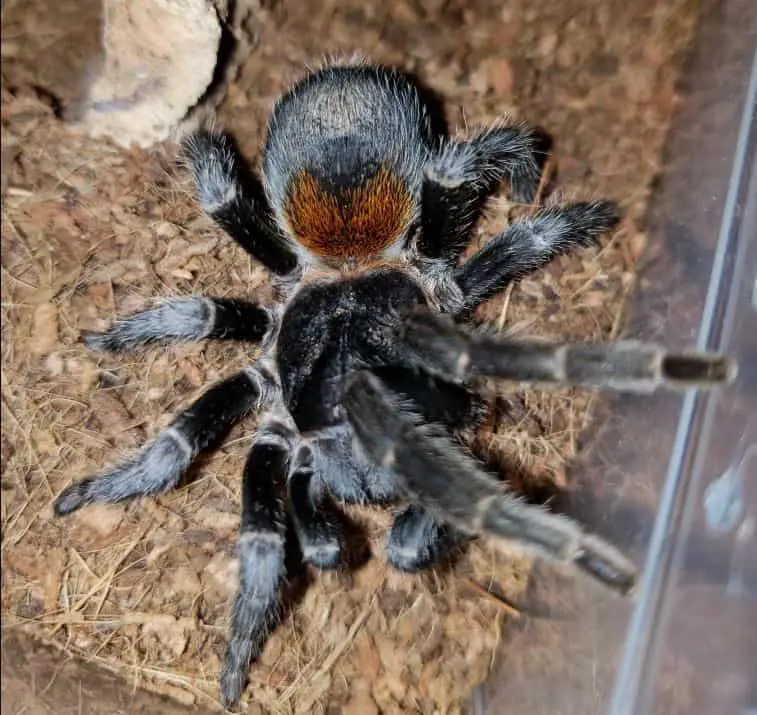
| Common Name | Chilean Dwarf Flame Tarantula |
| Scientific Name | Homoeomma chilensis |
| Type | New World |
| Leg Span | 3.5 inches (9cm) |
| Lifespan | Females 8-12 years / Males 2-3 years |
| Experience Level | Beginner |
Most people will be confused by seeing the Chilean Dwarf Flame tarantula at the top of the list. It’s a recently-discovered dwarf tarantula that’s still in the early stages of getting the traction it deserves. The reason why it made its way all the way to the top of the list is partly because of its beauty. It’s a small spider with a velvety-black appearance under bright red setae covering its abdomen.
However, the main reason we consider it should be at the top is because of its amazing behavior. The CDFT is extremely peaceful and even curious.
Instead of shying away from outside stimuli, you’ll often see her come out when she hears something. She’s also very peaceful and friendly, making her the best species for handling since it’s very rare to get bitten by a CDFT. All of this makes her extremely beginner-friendly and an excellent choice for newcomers to the tarantula-keeping hobby.
2. Green Bottle Blue Tarantula
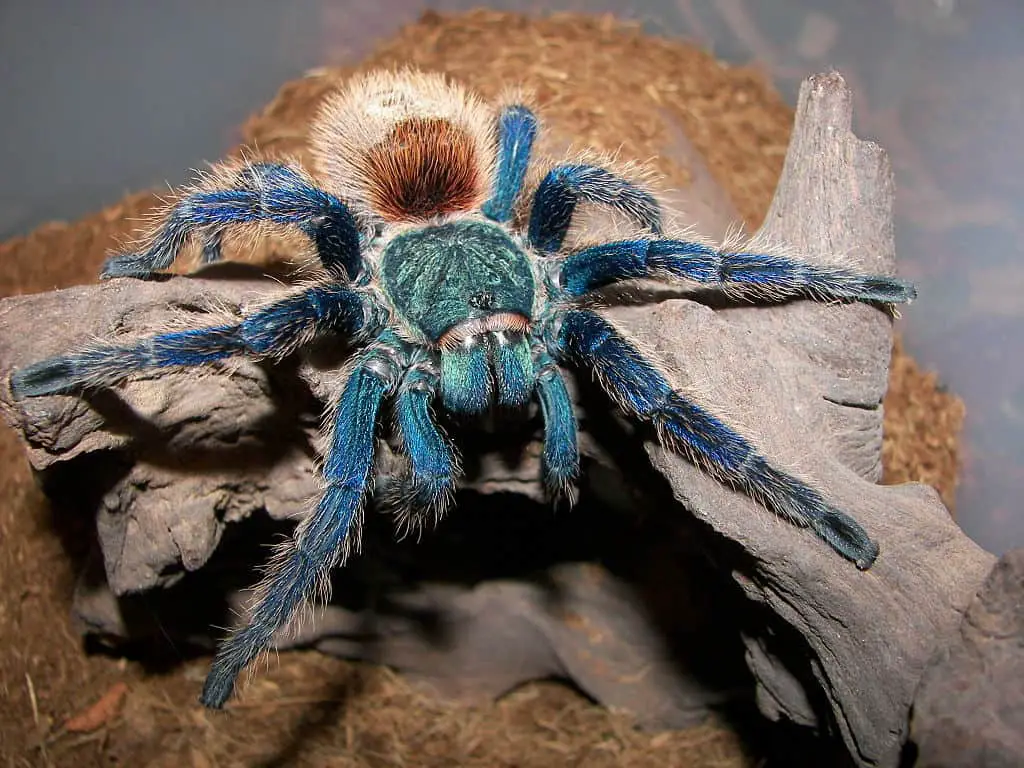
| Common Name | Green Bottle Blue Tarantula |
| Scientific Name | Chromatopelma cyaneopubescens |
| Type | New World |
| Leg Span | 6 inches (15cm) |
| Lifespan | Females 14 years / Males 4 years |
| Experience Level | Beginner |
The Greenbottle Blue is a perfect display tarantula for any room. Its bright blue, green, and orange colors are flashy and beautiful, and she spends most of her time outside, so you’ll get the chance to admire her beauty very often.
She also has an amazing feeding response, so mealtime will always be interesting with them. As for behavior, you can expect her to flick urticating setae if she feels threatened, but that’s as far as it usually goes. This means it’s a beautiful tarantula that’s also perfect for beginners.
3. Brazilian Black Tarantula
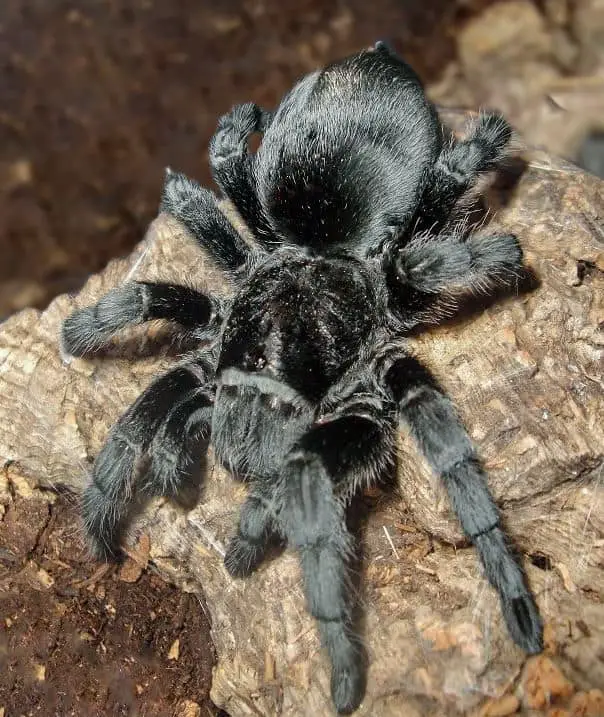
| Common Name | Brazilian Black Tarantula |
| Scientific Name | Grammostola pulchra |
| Type | New World |
| Leg Span | 8 inches (20cm) |
| Lifespan | Females 30 years / Males 6-8 years |
| Experience Level | Beginner |
No tarantula collection is complete without the black velvet look of the Grammostola pulchra.
She wins third place thanks to her beauty, peacefulness, and long lifespan. Females can live for up to thirty years, and if you’re careful with them, you can handle them with little-to-no risk of getting bitten.
4. Pinkfoot Goliath Tarantula
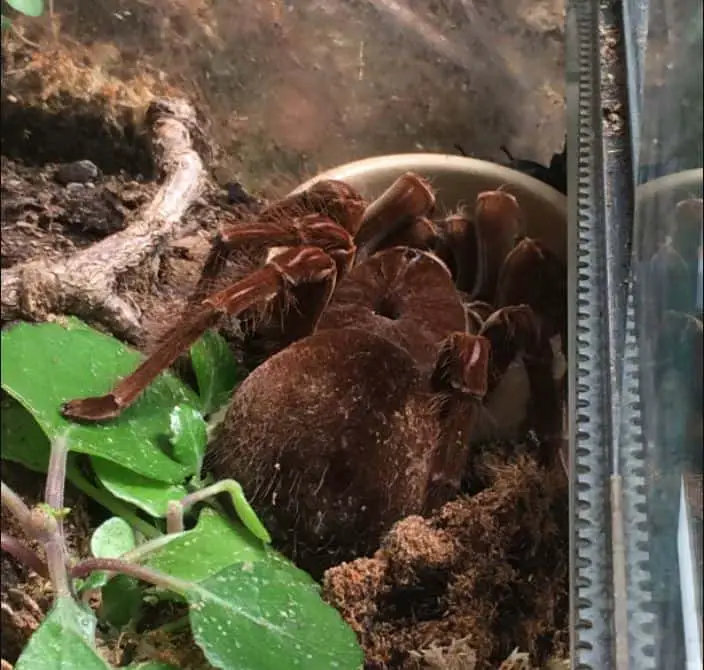
| Common Name | Pinkfoot Goliath Tarantula |
| Scientific Name | Theraphosa apophysis |
| Type | New World |
| Leg Span | 11 inches (28cm) |
| Lifespan | Females 25 years / Males 5 years |
| Experience Level | Expert |
If you want a large terrestrial spider then species in the Goliath genus are right up your alley.
With a weight of up to six ounces and a size that reaches eleven inches, these tarantulas are as large as a dinner plate with a bulky and menacing appearance.
However, their venom is very mild, and brave hobbyists even handle them (risking a painful bite from their huge fangs).
Out of the three different species in the Goliath Genus, the Pinkfoot Goliath Tarantula is the prettiest, with pink colors at the end of their legs during their early stages of development.
5. Orange Baboon Tarantula
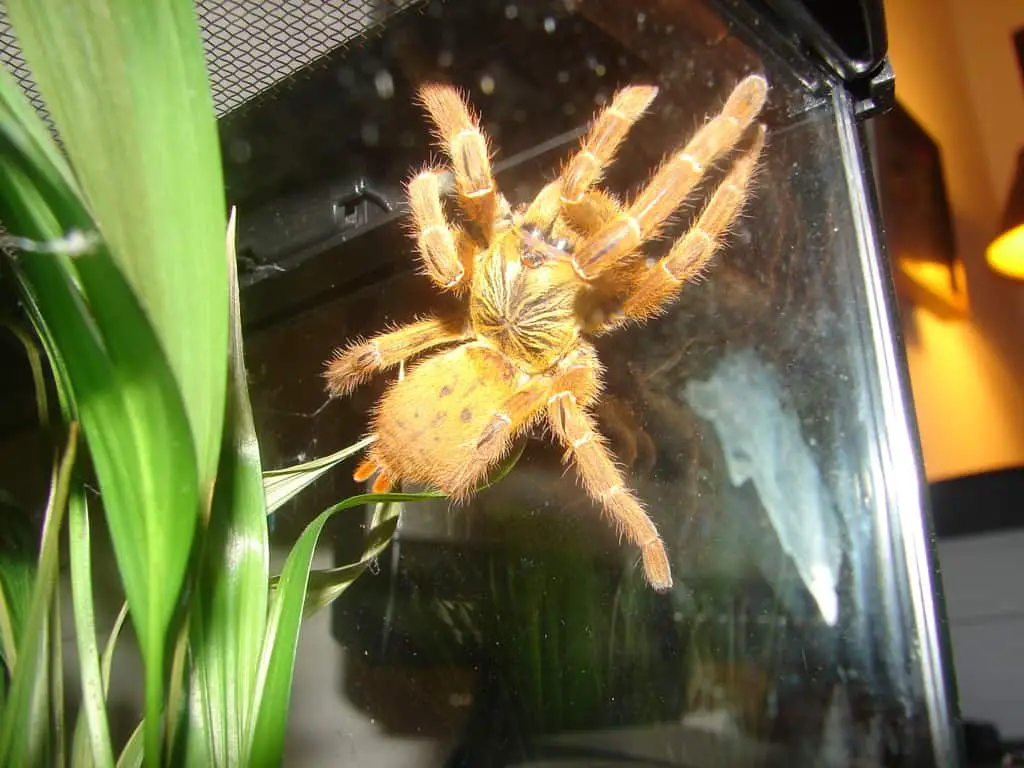
| Common Name | Orange Baboon Tarantula |
| Scientific Name | Pterinochilus murinus |
| Type | Old World |
| Leg Span | 6 inches (15cm) |
| Lifespan | Females 14 years / Males 4 years |
| Experience Level | Expert |
The Orange Baboon is the number 6 terrestrial tarantula on our list. It’s very popular in the hobby thanks to its fast movements and beautiful orange body. Its venom is incredibly potent, so it’s better to leave this spider to experienced hobbyists.
One of this spider’s main appeals is its feisty attitude, which she’ll display every time she feeds. The other aspect of this spider that draws hobbyists to her is her webbing habits. It creates intricate web systems that are a welcome sight in the enclosure’s decoration.
6. Mexican Fireleg Tarantula
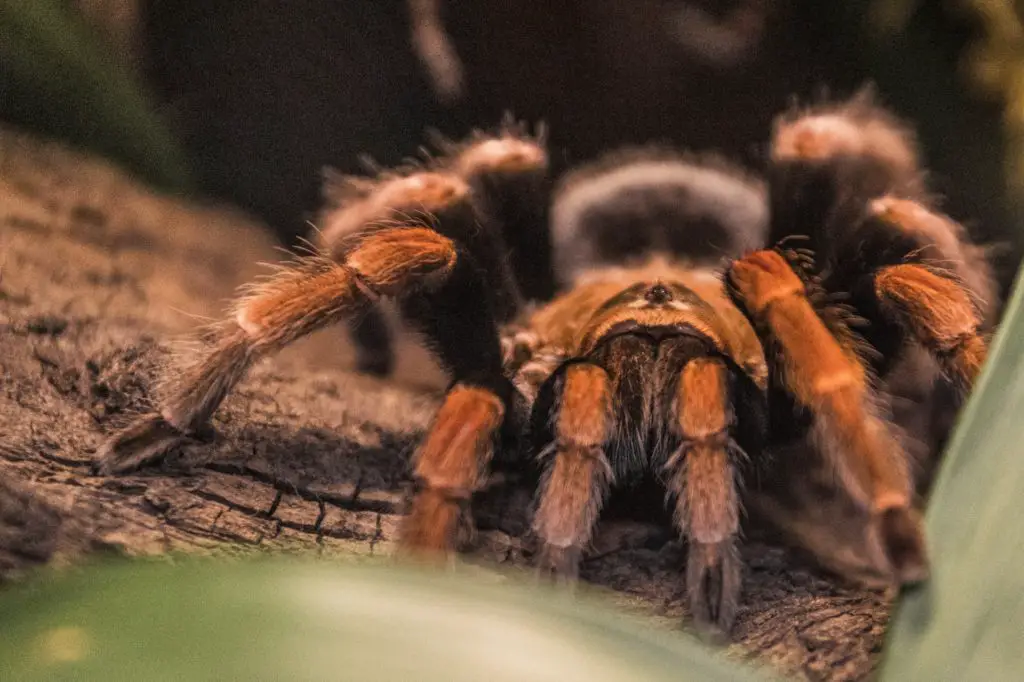
| Common Name | Mexican Fireleg Tarantula |
| Scientific Name | Brachypelma boehmei |
| Type | New World |
| Leg Span | 6.5 inches (17cm) |
| Lifespan | Females 25 years / Males 8 years |
| Experience Level | Intermediate |
The Mexican Fireleg Tarantula is a popular display species thanks to its beautiful orange and red colors over a black background. She spends plenty of time on the surface, so it’s a delight to look at her enclosure and find her going about her business.
She’s a beautiful spider with an aggressive feeding response, but her urticating hair is particularly bad. She doesn’t get a higher position on this list because of her habit of flicking hair that may burn you for over a week.
7. Colombian Giant Redleg Tarantula
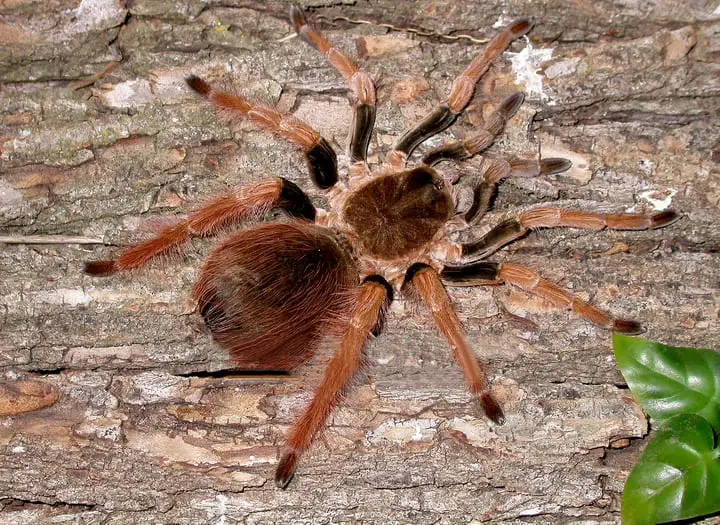
| Common Name | Colombian Giant Redleg Tarantula |
| Scientific Name | Megaphobema robustum |
| Type | New World |
| Leg Span | 6-8 inches (15-20cm) |
| Lifespan | Females 16-20 years / Males 3-5 years |
| Experience Level | Beginner |
Seeing a Megaphobema robustum is always a delight because of its beautiful looks and unique behavior. Tones of green and cream in her legs make a great contrast with the black at the center of her body, an appearance that’s especially mesmerizing when you see her move.
She’s also fun to watch because she likes to be on the move and tends to relocate foliage in her enclosure, so you’ll see her redecorate her surroundings every day.
Overall, a great display tarantula that’s easy to care for.
8. Brazilian Pink Bloom Tarantula
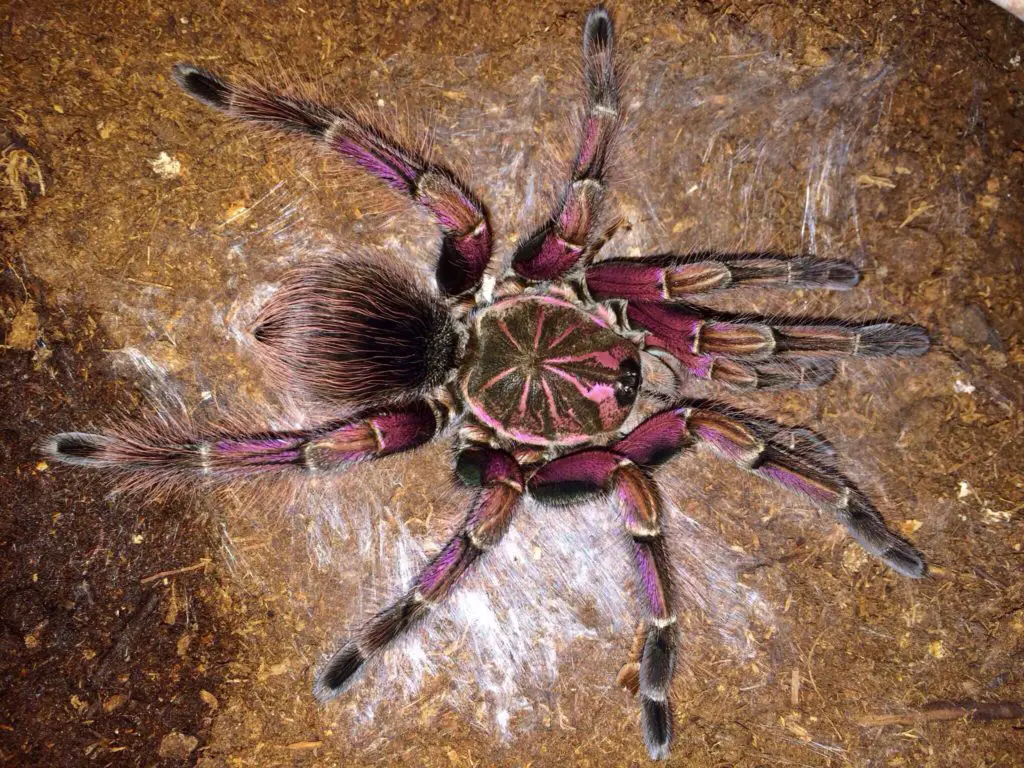
| Common Name | Brazilian Pink Bloom Tarantula |
| Scientific Name | Pamphobeteus sp. Platyomma |
| Type | New World |
| Leg Span | 8 inches (20cm) |
| Lifespan | Females 20 years / Males 4-5 years |
| Experience Level | Intermediate |
The Brazilian Pink Bloom is one of the most striking spiders you’ll find in the hobby. Bright patterns of purple, blue, and pink cover their bodies from top to bottom.
They’d be amazing display tarantulas if these colors were more consistent. Only the males have these colors, and at that, they become dull before a molt.
However, they spend plenty of time outside and have an aggressive feeding response, so there’s an appeal in having one even if you take out the color factor.
9. Bornean Neon Blue Leg Tarantula
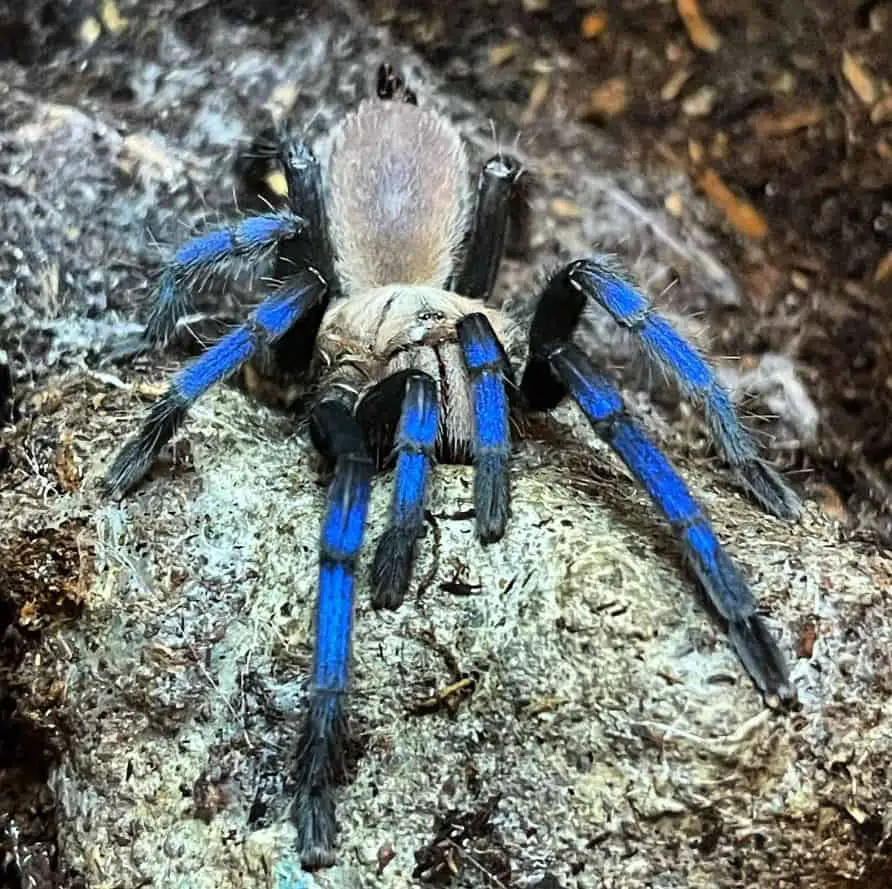
| Common Name | Bornean Neon Blue Leg Tarantula |
| Scientific Name | Birupes simoroxigorum |
| Type | Old World |
| Leg Span | 5 inches (12cm) |
| Lifespan | Unknown |
| Experience Level | Intermediate |
The Bornean Neon Blue Leg‘s name betrays a lot about its appearance. Her legs have a light blue color that’s so bright it almost looks like they’re shining. Unfortunately, these spiders are fossorial and spend a lot of time underground, which means that you might not see them as often as you’d like.
Besides her amazing looks, she’s an overall harmless tarantula, making her a great choice for a pet.
They’re quite a new species though, so when buying one of these spiders it’s important that you buy one that’s bred in captivity so that you do not support poachers.
10. Indian Rainbow Tarantula
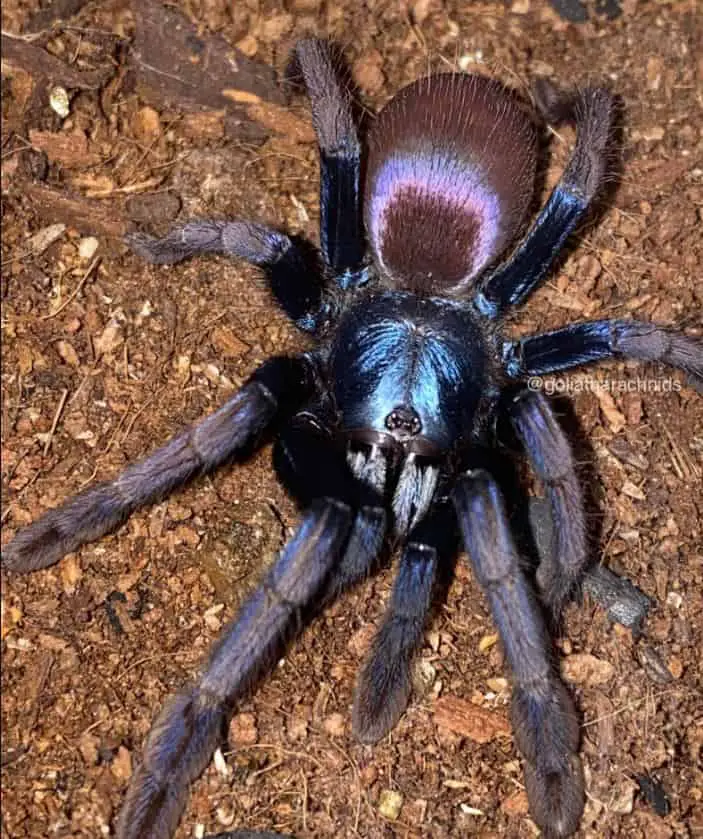
| Common Name | Indian Rainbow Tarantula |
| Scientific Name | Haploclastus devamatha |
| Type | Old World |
| Leg Span | 4.3 inches (11cm) |
| Lifespan | Females 12-15 years / Males 2-4 years |
| Experience Level | Intermediate – Expert |
It’s easy to see why the Haploclastus devamatha made it into our top ten. One look at one, and you’ll be amazed by her metallic blues, pinks, and purples.
Sadly, as is the case with the Bornean Neon Blue Leg Tarantula, the IRT is fossorial and will spend most of its time hiding underground. However, the few times you get to see it, you won’t regret it; they truly are a sight for sore eyes.
Final Words
There are literally hundreds of different tarantula species. Making a comprehensive top 10 list of the best terrestrial species is therefore no easy task.
Naturally, everyone will have their own opinion on what the best terrestrial tarantula species are, and there really is no one right answer.
However, we do hope that this top 10 list gives you a starting point that you can use to orientate yourself when researching terrestrial tarantula species
- How Long Do American Eskimo Dogs Live? Important Factors and Care Tips - September 29, 2023
- Do American Bulldogs Need Grooming? Essential Tips and Care Guidelines - September 29, 2023
- Do Bengal Cats Enjoy Playing? Essential Tips for Keeping Them Active - September 29, 2023